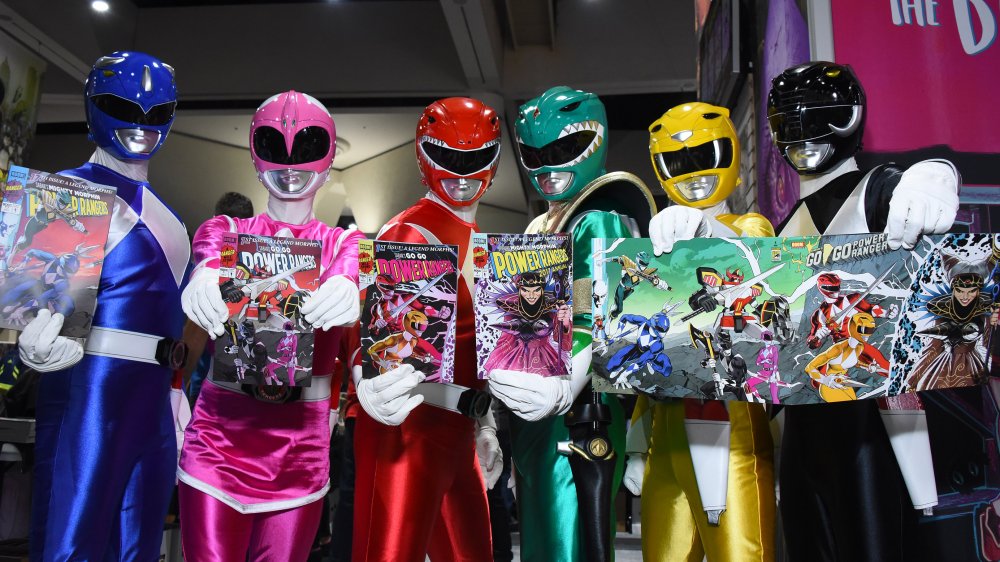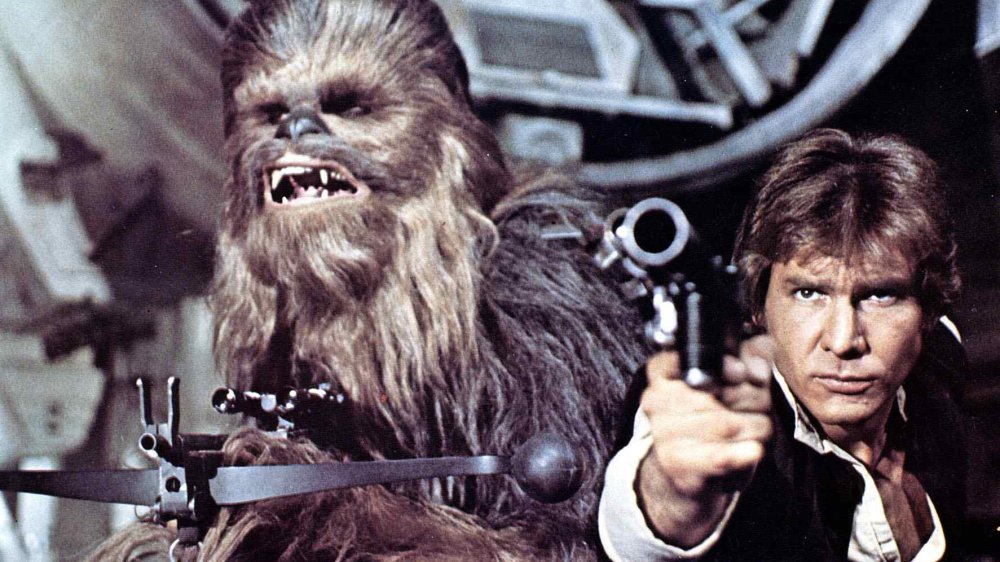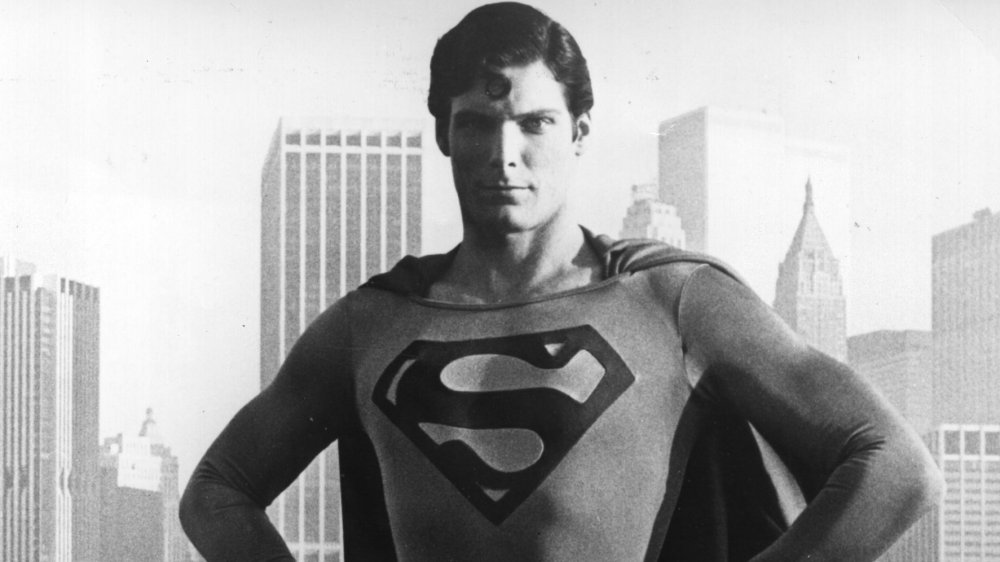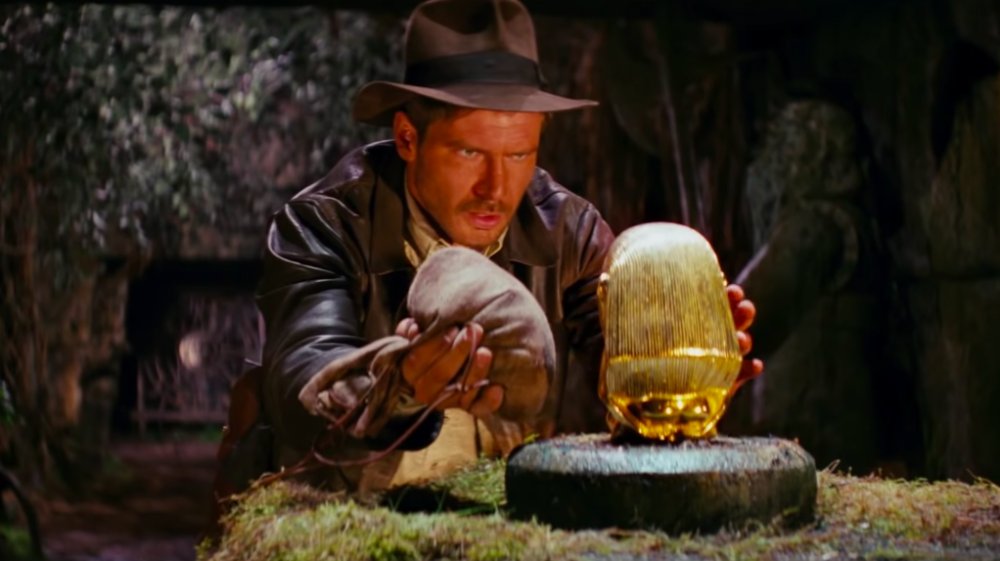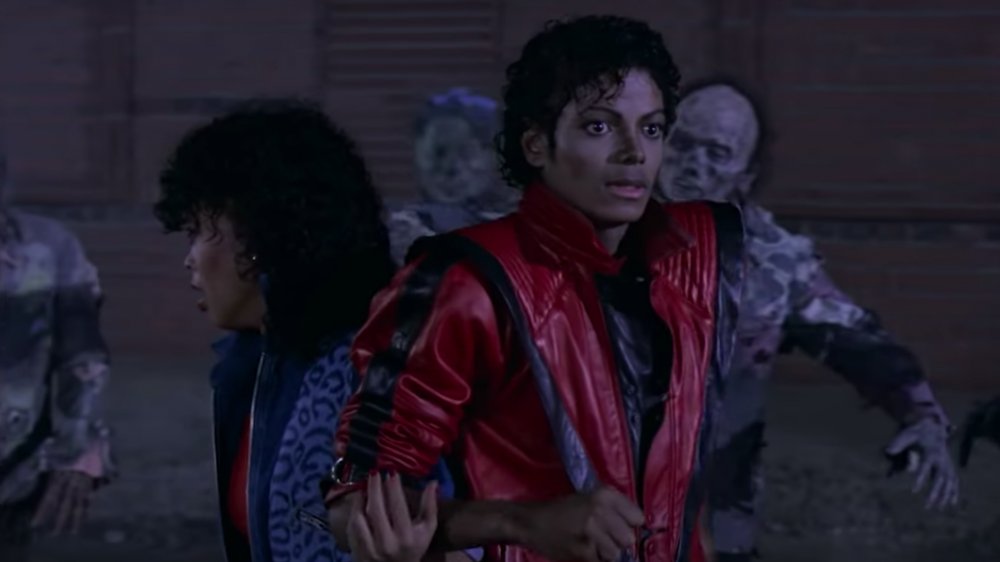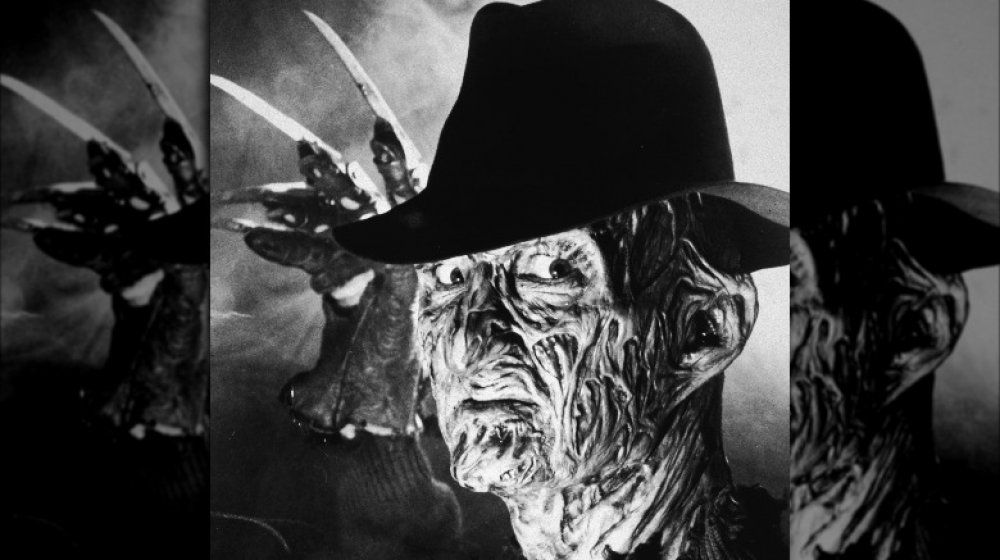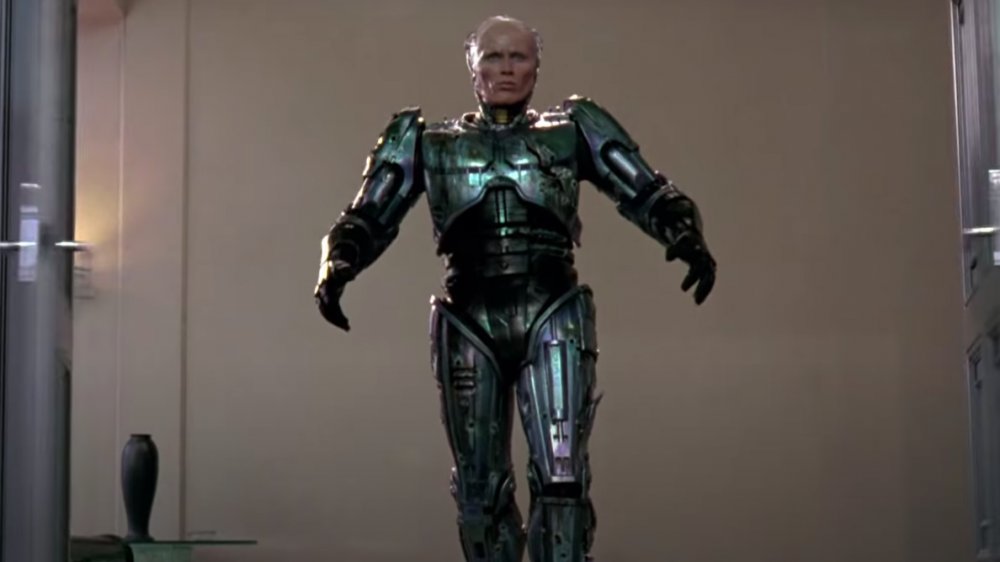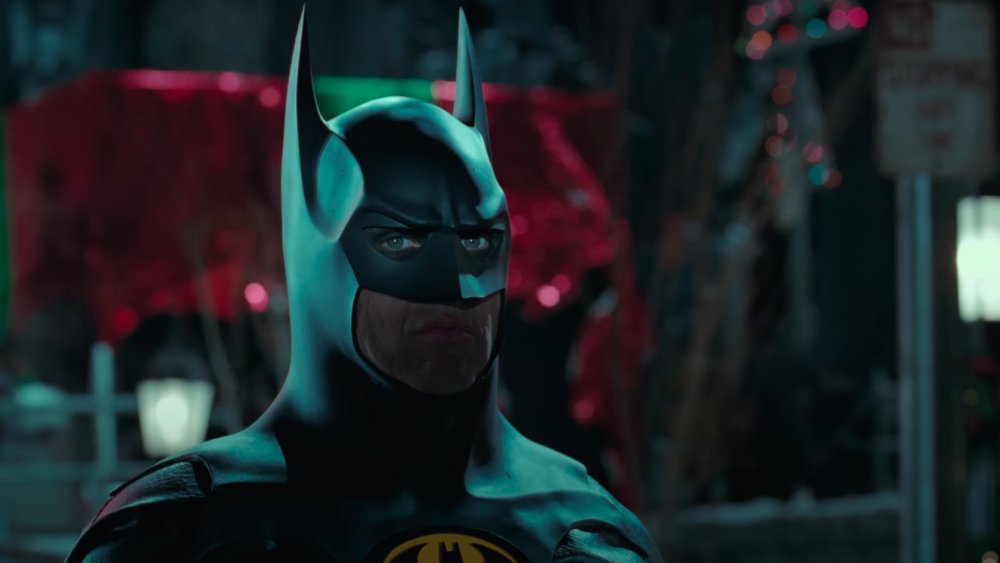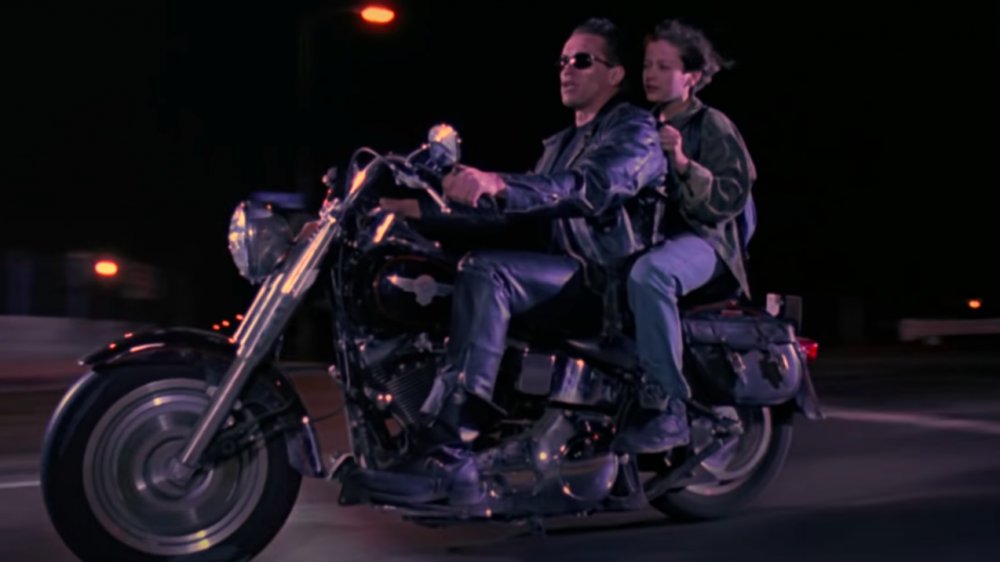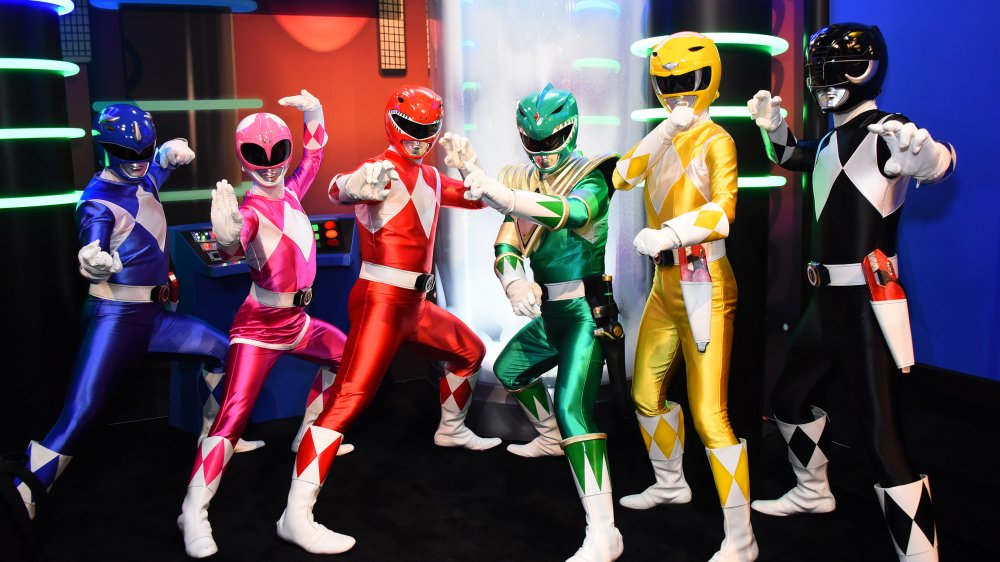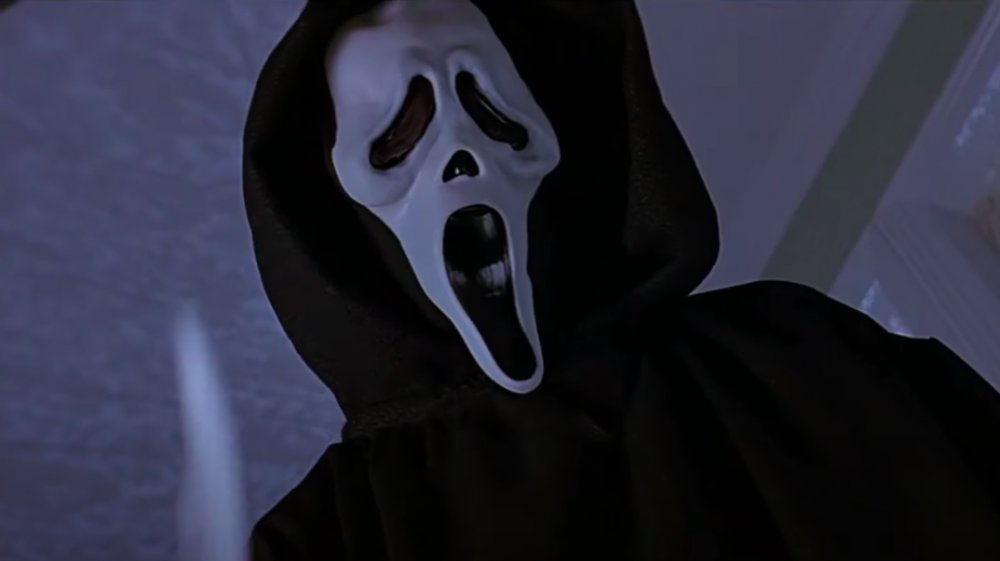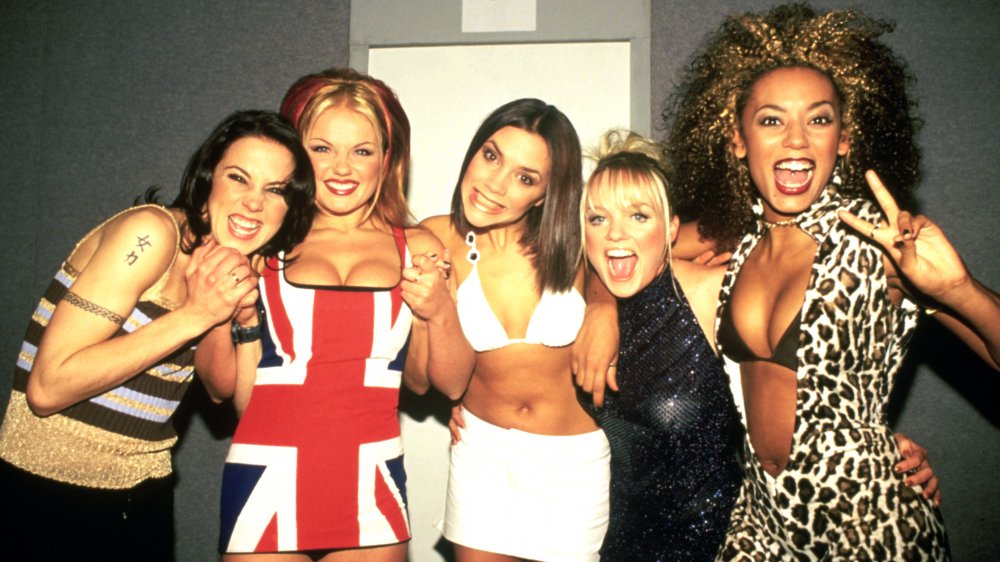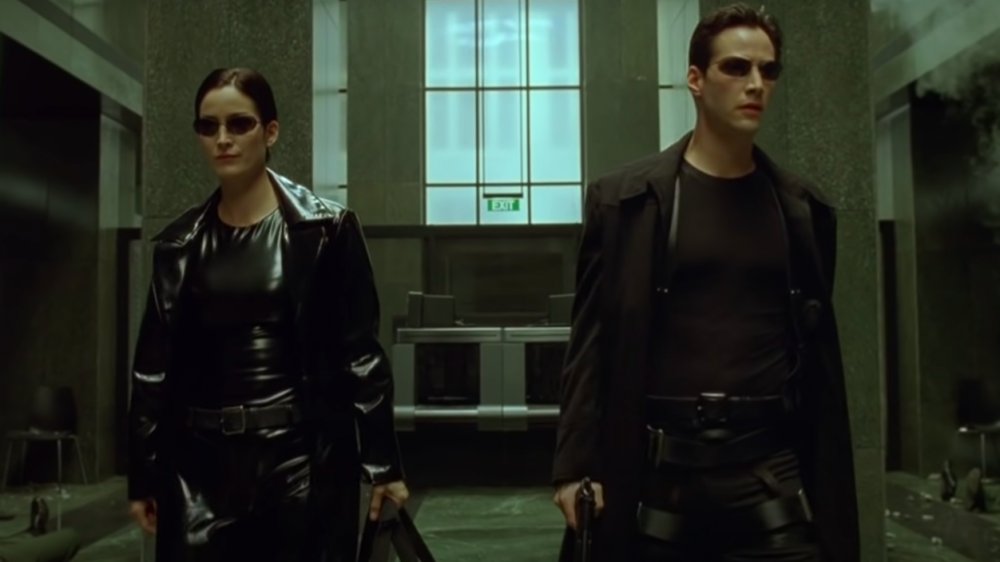The Top Halloween Costume The Year You Were Born
Step aside, Christmas, as Halloween has been steadily growing as a heavy-hitter in consumer spending throughout the years. As revealed by Space Coast Daily, Halloween is the "second-largest commercial holiday in the United States after Christmas," with an estimated $6 billion spent annually. Although costumes donned on Halloween are, for the most part, usually just worn once, the National Retail Federation reported in 2019 that shoppers claimed they would spend on average $86.27 on their outfits — meaning that the annual costs are only continuing to soar.
That being said, is anyone surprised by these statistics? Halloween, for both children and adults alike, allows us an escape from reality. Costumes take inspiration from beloved TV and film characters, iconic celebrities, and timeless spooky ghouls. As Prosper Insights Executive Vice President for Strategy Phil Rist told the National Retail Federation, while children flock to the "perennial favorites" such as "princesses and superheroes," adults that celebrate gravitate towards "new ideas," or in other words, whatever is popular that year.
While trends come and go, some pop culture characters have gained legendary status thanks to their likenesses being emulated by countless fans on All Hallows' Eve. So, what was the top Halloween costume the year you were born? Grab some candy, throw on the Halloween theme song, and let's take a trip down memory lane.
1977-1978: Dress up as Star Wars characters, you must
In 1977, the public was obsessed with "a galaxy far, far away." Yup, you guessed it, we're talking about Star Wars: Episode IV – A New Hope, George Lucas' legendary space epic that's gone on to captivate audiences for decades to come. As Britannica notes, the flick "became one of the most successful and influential franchises in motion picture history," earning "almost $3 million in its first week and [grossing] $100 million by the end of the summer." Pretty crazy, right?
So, how does a movie make that much during its opening run, when the concept of Star Wars wasn't the pop culture juggernaut it is today? Through marketing, of course. As the starlet who played Princess Leia, Carrie Fisher, told Time, "the thundering hooves of asteroid arrival and Death Star intervention had started many days before," adding that the release felt like "an earthquake." She recalled driving past one line in front of a movie theatre, filled with "geeks [and] enthusiastic young people with sleeping bags." As Fisher revealed, "I just stared in amazement."
Of course, by the time Halloween rolled around only five months later, Star Wars was a cinematic phenomenon, and kids all over the country were flocking to dress up as their fave characters, from Princess Leia, Han Solo, and of course, Darth Vader.
1979-1980: It's a Bird! It's a Plane! It's Superman!
The Man of Steel — a.k.a. Superman — was first introduced to the masses in 1933 when Jerry Siegel and Joe Shuster (two teen artists from Cleveland, Ohio) released the first comic book featuring the red-and-blue-clad crime-stopper. However, as revealed by Local.com, it's only in 1938 that the superhero reached widespread popularity after the "iconic cover art" of "Superman lifting a car over his head" was finally released.
Fast-forward 40 years later, and Clark Kent finally made his big-screen debut during the Christmas season in 1978 with the release of Superman. At the time, the movie was revolutionary. The story "proved to be just as monumental a cinematic culture shift as Jaws [...] and Star Wars," wrote The Hollywood Reporter in 2018, adding that it "was nominated for three Academy Awards and received a Special Achievement Oscar for Visual Effects." And just as the movie's tagline promised, audiences believed that a man could fly.
Perhaps some of the younger viewers took a literal approach to Superman's ability to zip through the air. According to the New York Times, tragically enough, in 1979, a 4-year-old boy "fell from a seventh‐floor window [...] apparently while trying to 'fly like Superman.'" He passed away at a hospital a few days later. While there's no denying the popularity of this Halloween costume between 1979 and 1980, we're assuming there were at least a few hesitant parents.
1981-1982: Indiana Jones' outfit was simple, yet iconic
Cinematic king Steven Spielberg once declared he "always wanted to make 'a James Bond film without the hardware'" (via The Telegraph). Well, in June of 1981, alongside writer George Lucas, he did just that, with the release of Raiders of the Lost Ark, starring Harrison Ford as the now-legendary Indiana Jones.
Although initially, the flick fared decently, it's only as the weeks went on that it became a success, grossing over $367 million worldwide. In fact, by the holiday season, the new joke in Hollywood was that the film would "be the big 'Christmas movie'" of the year — after spending an incredible six months in theatres (via The New York Times). Of course, children across the country were looking at Indy with sheer adoration, or as Esquire so perfectly put it in 2019, "right now there may be a whole generation of archeologists who chose their profession purely out of a desire to become the next Indiana Jones."
However, as kids, it was easier to ditch the books and head straight to the shops to find the complete outfit for the famed fictional archeologist. Per Esquire, "few characters in cinematic history have as iconic a look as Indiana Jones," so all kids really had to do was get their hands on a brown leather jacket, khakis, boots, and, of course, Indiana Jones' legendary fedora.
1983-1984: Everyone wanted to be a zombified Michael Jackson
Is there any music video more memorable than Michael Jackon's "Thriller"? Probably not, and it's something that even fans knew when word of the video's production leaked to the public. In a clip from Making Of Michael Jackson's Thriller, countless Jackson devotees swarmed the set to catch a glimpse of The King of Pop, with one LAPD officer telling the camera there were about "[300] to 400 children" present.
Sure enough, Michael Jackson delivered. As LiveAbout wrote years later in 2020, "When the video first appeared on MTV on December 2, 1983, it captured the imaginations of young and old and impressed everyone with the intensive make-up and special effects." Was anyone surprised? The singer looked downright cool for the majority of the nearly-15-minute video, strutting around in his now-legendary red leather jacket and matching pants, surrounded by dancing ghouls. Even in the end, when Jackson turns into a monster himself, the appeal to kids was still there, as director John Landis (of An American Werewolf in London fame) ensured the star didn't look "too hideous" (via The Guardian).
The result? A total success, or as Rolling Stone put it, "Michael Jackson towered over the 1980s the way Elvis Presley dominated the 1950s." Halloween for the next few years was a sea of red jackets and zombified makeup, and even to this day, the red leather ensemble immediately brings back memories.
1985-1986: One, two, Freddy's coming for you
In 1984's A Nightmare on Elm Street, the character of Freddy Krueger absolutely terrified children — and why wouldn't he? Krueger was known for his ability to appear in your dreams, embody your biggest fears, and subsequently slice you to pieces with his claws (sorry, Edward Scissorhands, you could never compete).
Morbidly enough, director Wes Craven got the idea for the flick thanks to a real-life incident. As he told Vulture in 2014, he found inspiration for Krueger after reading an article in the LA Times describing a refugee child from the Cambodian genocide who was terrified to sleep. The reason? He feared he would be attacked in his dreams and pass away. "He tried to stay awake for days at a time," Craven recalled, adding, "When he finally fell asleep, his parents thought this crisis was over. Then they heard screams in the middle of the night. By the time they got to him, he was dead."
It's ironic that a character known for killing children in their sleep happened to be a hit when it came to Halloween from 1985 to 1986, yet that's exactly what happened. As the New York Post puts it, along with spawning countless sequels and being "named the 40th-greatest villain in history by the American Film Institute," Freddy Krueger was also the subject of "countless Halloween costumes bought last-minute at local drug stores."
1987-1988: The X-rated RoboCop appealed to children, too
Dubbed "the greatest science-fiction film since Metropolis" by director Ken Russell (via The Criterion Collection), RoboCop was groundbreaking for its time. As Indiewire explains, "at the time, nobody had ever seen anything like it," adding that it "modernized robot movies," while challenging the "political, cultural and social climate[s]." Released in 1987, the flick gained two Academy Award nominations and came in 14th at the box office that year. While it didn't hit the number one spot, it certainly had the most recognizable costume design and special effects.
RoboCop's success was incredible. Per Esquire, it "[spawned] two sequels, a television series, some anime," and even a remake decades later in 2014. Interestingly enough, while the movie was incredibly violent and achieved an X-rating (via Indiewire), it was still marketed towards children.
Along with toys and commercials, there was also a children's television show, and the costumes that followed, which bore a closer resemblance to the animated series than the gory, live-action original. As one writer from The Retro Network so perfectly summarizes what every child in 1987 was thinking: "Despite the bloody bodies being ripped to shreds by bullets on the TV screen that night, I woke up the next morning with only one thought in my head, 'RoboCop looks awesome.'"
1989-1990: Batmania ruled America
When the original Batman TV series came out in 1966, it was an accurate depiction of the masked comic book superhero that children and adults alike grew to recognize. As Den of Geek writes, this Adam West rendition "walked the line between loving adaptation and straight-up parody." With that taken into consideration, it's obvious why there was widespread hesitation with the 1989 big-screen Batman debut.
As an article by Mental Floss details, a market research group assessed Batman's potential as a total "flop," adding that according to marketing data, it was actually the Incredible Hulk who was more popular — with Batman being "only a quarter as appealing as the California Raisins." Totally lame, right? To make matters even worse, Michael Keaton, who would end up playing the Caped Crusader, "didn't have a lot of early defenders" when he took on the role (via Uproxx).
Nevertheless, production blitzed forward. Per Mental Floss, "The film was released on June 23, 1989, and went on to gross $253.4 million, making it the fifth most successful motion picture up to that point." Soon enough, the movie "ruled the summer of 1989," and its merchandising was in full swing, including "hats, shirts, posters, toys, and bed sheets." Simply put, "people didn't merely want to see Batman" — but instead wanted to be him, too. Was there any Halloween costume more popular than the Caped Crusader during this time? We think not.
1991-1992: The Terminator came back
Although it was a sequel, Terminator 2: Judgement Day still managed to become one of the top movies of the year, grossing over a whopping $500 million worldwide. Did anyone expect anything less from a film that reportedly had a budget of $100 million?
As it turns out, Arnold Schwarzenegger's lead role as the Terminator took a surprising twist: this time around, he wasn't a heartless robotic monster. As the AV Club notes, "It takes this character — one who had been a terrifying and brutal killing machine in the last movie — and establishes him as the good guy." Unsurprisingly, kids thought he was the coolest character ever. "Basically, I was Ralphie from A Christmas Story," writes Germain Lussier of Gizmodo, detailing his quest as an 11-year-old dying to see the flick. "There was a lot of talk about the movie. Breakfast, lunch, dinner, I wouldn't shut up [...] I became obsessed with the movie. I bought posters, toys, everything."
Schwarzenegger helped boost the film's popularity off-camera, too, even visiting elementary schools to motivate kids to be more active in their spare time. According to the Los Angeles Times, a sea of children (and sometimes moms) could be seen shouting, "Arnold! Arnold! Arnold!" whenever he'd appear. There's no doubt dressing up as the Terminator for Halloween would have won you major popularity points — even if only for the opportunity to cooly deliver the classic one-liner from the flick: "Hasta la vista, baby."
1993-1996: Which color Power Ranger were you?
Was there any kid in the '90s that didn't argue with their friends over which color Power Ranger they wanted to be? Mighty Morphin' Power Rangers first wowed US audiences in 1993, using old footage from a Japanese show called Super Sentai and adding new content adapted for American viewers. According to a 2013 article by the Hollywood Reporter, the series initially faced a round of rejections until it finally found a home on Fox. "By the time we had aired our third episode, we were the most popular thing on the air," mused Elie Dekel, current president of Saban Brands.
Soon enough, every child was dying to "morph" into their favorite Ranger, and this was made possible with countless toys, merchandise, and Halloween costumes. "It's far easier for a child — or anybody — to project themselves into that costume and imagine themselves as a Power Ranger," explains Brian Casentini, Saban Brands' senior VP of development and production. "To be able to watch the show and then go and play it, either through role-play or through action figures, that's just a natural desire for children."
The show definitely did something right because its popularity never went away. In fact, the franchise still sells millions of dollars. As USA Today asks, "why are we so nostalgic for the Power Rangers, specifically?" Simply put, "If you didn't grow up with it, it's difficult to nail down the appeal."
1997: Ghostface from Scream made slashers cool again
Joining the ranks of Freddy Krueger and Jason Voorhees, Ghostface from Scream became a sudden slasher favorite following the movie's December 1996 release. As Dazed writes, the flick completely redefined the "stale" slasher genre that was so popular a decade prior, adding that, "The dormant genre had become oversaturated with straight-to-video films and recycled, uninventive and clichéd plots."
Scream, on the other hand, was different. It was self-aware, addressing horror tropes and subsequently making a parody out of them. Per Newsday, it "went on to become a $173 million success and inevitably launched a franchise." As for Ghostface? His costume was simple yet effective. As it turned out, in the '90s, the mask was available at any Halloween shop, and it's only after producer Marianne Maddalena came across it one day and showed it to director Wes Craven that Ghostface was born (via The Hollywood Reporter).
Following Scream's popularity, the simple costume of the mask inspired by Edvard Munch's painting "The Scream" and a black toga has become a Halloween staple, with shops regularly stocking "replicas of the mask and robe" (via The Guardian). Unfortunately enough, according to Newsday, it also paved the way for "copycat crimes" and some real-life teen "murder spree[s]."
1998: We really, really wanted to dress up as the Spice Girls
The Spice Girls were practically every tween girl's obsession since they told us what they want, what they really, really want in 1996 with the release of their debut single, "Wannabe." According to the Sheffield Telegraph, "'Wannabe' topped the UK Singles Chart for seven weeks," then made its way across the pond in January of 1997, where it "[topped] the Billboard Hot 100 for four weeks."
The girls themselves were characters, each with their own distinct looks — giving fans options as to who they wanted to emulate. A lover of sports? Take after Sporty Spice. A Barbie aficionado? Baby Spice is for you! The one common denominator for all the Spice Girls was that they were outrageous when it came to fashion. As the Independent puts it, "the shoes were preposterously large, the latex was worryingly shiny and all that neon was practically blinding, but somehow, it worked."
Although Geri Halliwell (more commonly known as Ginger Spice) left the group in May of 1998 citing "'differences' between bandmates and extreme tiredness" (via BBC), this didn't stop fans from across the world from dressing up as their favorite Spice for Halloween. Maybe it had something to do with Halliwell's iconic Union Jack dress from the year prior?
1999-2000: Neo and Trinity are to blame for tiny sunglasses and leather dusters
The turn of the millennium saw us all discussing whether we'd take the red pill or the blue pill — an instantly recognizable question for anyone who watched 1999's The Matrix. The flick itself was revolutionary, blending sci-fi, Kung-Fu elements, and special effects that included bullets traveling in slo-mo and jaw-dropping fight sequences. Simply put, if you weren't rocking long leather duster coats, tiny sunglasses, and chunky black boots on Halloween in 2000, what were you really doing?
Perhaps our obsession with The Matrix had something to do with Y2K, "the supposed turn-of-the-century bug that would bring our infrastructure to a terrifying halt" (via The Guardian). When the bug failed to become a reality, we were ready to embrace a new, futuristic world and had exciting technological gadgets to boot.
The Matrix gave birth to a new cyberpunk fashion trend, even inspiring high-end designers such as Dior mere months after its release. Unless we were already wearing costumes from the now-cult classic, Halloween was the perfect opportunity to dress as either Neo (Keanu Reeves) or Trinity (Carrie-Anne Moss), showing everyone that we were "woke" when it came to philosophical concepts and "warnings about the corruptive potential of technology" (via Little White Lies).
